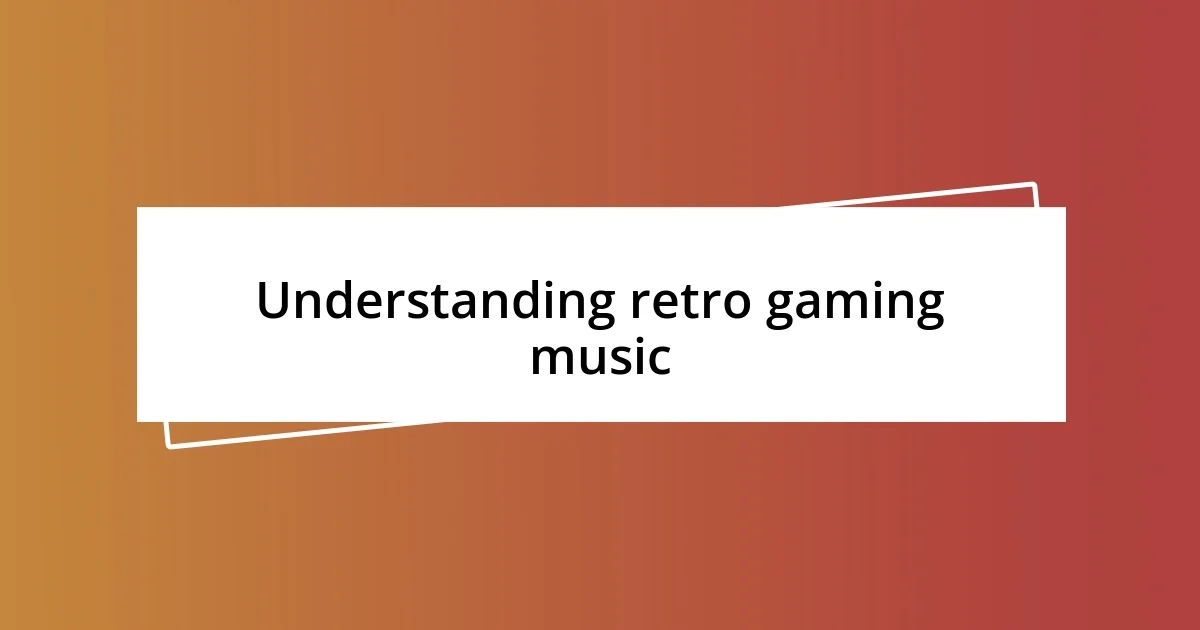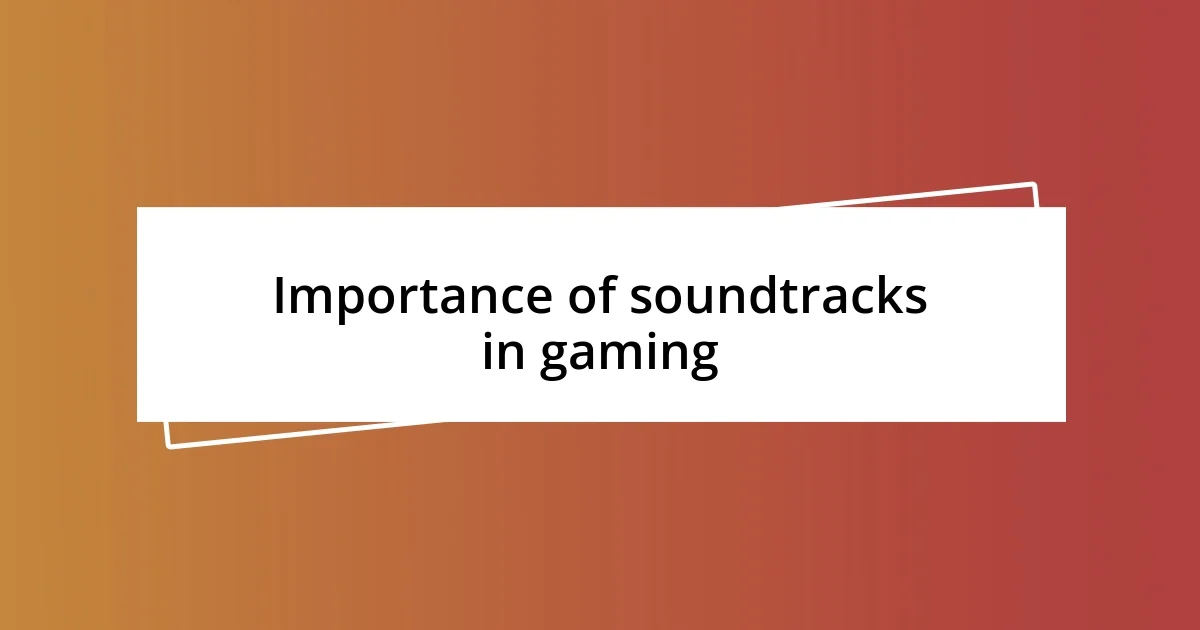Key takeaways:
- Retro gaming music evokes strong emotions through creativity and limitations, shaping gaming culture and enhancing experiences.
- Soundtracks are essential for creating immersive gameplay, impacting emotions and leaving lasting memories for players.
- Creating retro-inspired music using modern tools allows for exploration of nostalgic sounds, merging personal experiences with classic influences.

Understanding retro gaming music
Retro gaming music is a fascinating blend of nostalgia and innovation. I still remember the excitement of hearing that iconic chiptune melody from my first Nintendo game—it felt like an old friend welcoming me back to a simpler time. How can a few synthesized notes evoke such strong emotions? It’s all about the creativity within limitations; composers had to craft memorable tunes using just a handful of sound channels.
The technology behind retro gaming music was unique and often challenging. Take the Commodore 64, for instance, which featured the SID chip—one of the first to produce rich sounds that could mimic real instruments. I can vividly recall sitting in my living room, absorbed in the rhythmic beats of a 8-bit hero saving the day. Doesn’t it amazing how those simple sounds can transport us back to moments of sheer joy?
Understanding the impact of this music goes beyond just nostalgia; it’s about how it shaped gaming culture. From catchy themes that stay in your head long after the game is over to ambient soundscapes that enhance the gaming experience, retro gaming music has a distinct character. I often wonder how many gamers today appreciate the artistry behind the sounds they hear—each note a tiny piece of a larger, incredibly creative puzzle.

Importance of soundtracks in gaming
Soundtracks play an essential role in creating an immersive gaming experience. I can recall countless times when the music has heightened my emotions, whether it was the backdrop to an epic boss fight or the soft tunes accompanying exploration in a serene environment. Soundscapes can transform a game moment into something truly memorable, anchoring the visuals with a powerful audio experience.
- Emotional Resonance: The right soundtrack evokes feelings of nostalgia, excitement, or tension, making the gameplay more impactful.
- Atmosphere Creation: A well-crafted score sets the tone for the game world, helping players feel like they belong in that universe.
- Memorable Moments: Catchy melodies often become synonymous with a game, solidifying their place in the hearts of players for years to come.
I often find myself humming tunes from old favorites long after I’ve put down the controller. The melody feels like a bookmark in my memory, instantly transporting me to the moment of victory or defeat. Having that auditory connection reminds me just how powerful and influential soundtracks are in shaping our gaming stories.

Creating your own retro-inspired music
Creating retro-inspired music can be an exhilarating journey filled with creativity. I remember the first time I sat at my keyboard, trying to replicate the catchy tunes from my childhood favorites. The magic lies in capturing that simplistic yet charming sound design, often using modern software that can mimic those classic sound chips. What if you approached it like a puzzle? Every note and beat you place contributes to an intricate picture that can resonate with listeners, just like it did back in the day.
Using a digital audio workstation (DAW) gives you the freedom to experiment with different synthesized sounds, bringing your retro vision to life. I often play around with a handful of sounds, creating melodies that transport me back to pixelated worlds. It’s like a labor of love—every modulation reminds me of late nights spent battling pixelated foes, driven by the mesmerizing chiptunes that filled the room. How many times have those melodies urged me to keep going? The answer is countless!
Consider incorporating elements like arpeggios and pulse-width modulation to enrich your compositions. I find that adding layers can create a nostalgic vibe, much like those soundtracks I adored. It’s rewarding to hear those rhythmic patterns emerge and evolve into something unique. Have you ever noticed how a simple change in tempo can transform the vibe entirely? By blending your personal experiences with classic influences, you’ll create something truly special that resonates emotionally with both you and your audience.














